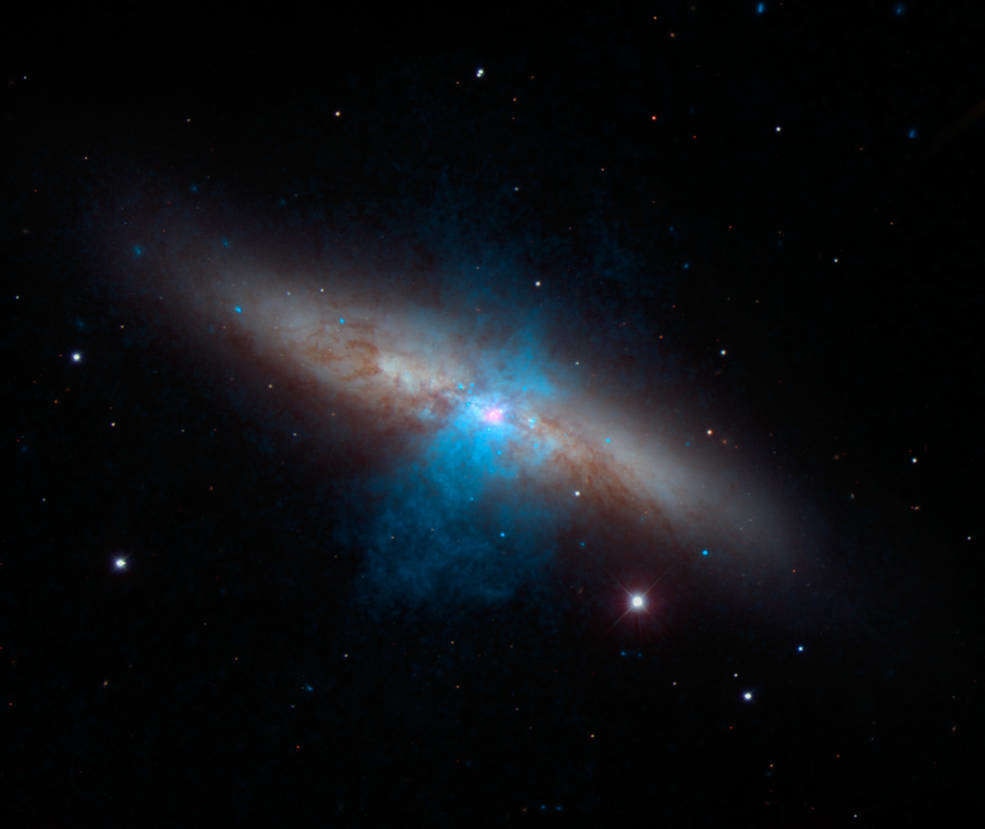Create a free profile to get unlimited access to exclusive videos, sweepstakes, and more!
Could pulsars shine a flashlight on the mysteries of supermassive black holes?

Supermassive black holes are the gaping mouths of galaxies, but despite their being the size of millions to billions of Suns, very little is actually known about these beasts.
There might be a way to find out more about mergers between the most gargantuan black holes in the universe — through the emissions of another type of object. While there is no definite proof for the gravitational waves they are thought to release when they merge, radio pulsars (the super-compact and magnetized cores of dead stars that spin and consistently “pulse” with radio waves) could give some insight into what goes on when monsters collide.
Supermassive black hole mergers that happen when galaxies have run-ins with each other can take millions of years. When the black holes creep dangerously close to each other, they become a binary system that sends out gravitational waves otherwise known as ripples in spacetime. Radio pulsars could help find these mysterious gravitational waves.
Researchers Boris Goncharov and Ryan Shannon of the ARC Centre of Excellence for Gravitational Wave Discovery (OzGrav) recently led a study, published in The Astrophysical Journal Letters, about using the timing of pulsar radio waves to find evidence of gravitational waves from supermassive black holes.
“When galaxies merge, gravity and various dynamical interactions are expected to slowly bring pairs of supermassive black holes together,” Goncharov tells SYFY WIRE. “Once the black holes are close enough to each other, they will head into a collision course due to the emission of gravitational waves.”
It has already been theorized that the noise surrounding pulsar radio wave observations may be on the same level as gravitational wave signals from merging supermassive black holes. If the noise is actually coming from such mergers, it could tell us things that can only be assumed right now. Not only would it give away more about the interactions between the black holes that are about to collide, but possibly also the weight of the black holes, how they evolved from the beginning of time, and what, if anything dark matter (another enigma) had to do with it.
Whether dark matter is involved with black holes will probably remain unknown until there is a way to detect dark matter. Also invisible, this is the stuff believed to affect the movement and interaction of galaxies, which relates to galactic mergers, and it may even explain how those mergers evolve and even feed off the energy black holes give off when they rotate. There have been some more controversial ideas, one claiming that black holes are really massive clumps of dark matter that have accumulated. We can’t see them either way.
When radio waves from pulsars reach Earth, they may be telling us how their speed is influenced by gravitational waves that are in the way.
“The delays and advances in radio wave arrival times reflect how gravitational waves change distance between us and the radio pulsars as the gravitational waves pass by,” Goncharov says. “These periodic distance changes represent the passing gravitational waves and carry imprints of black hole binary rotations; each revolution brings binaries closer together.”
That noise itself is debatable. It may be coming from the pulsars themselves, but further investigation will eventually demystify its origins. So are gravitational waves really the noise (or at least part of the noise) that causes pulsar radio waves to speed up or slow down on their way to us? Keeping an eye on a pulsar already tells scientists whether or not there is any noise to begin with, and potentially its properties, but Hellings-Downs spatial correlations would provide a way to measure observations of radio wave arrival times against what they are supposed to be.
Unfortunately, there is not yet enough evidence for Hellings-Downs correlations. When there is, they will be able to tell observers how long radio pulses coming from any given region in space should be delayed, with delays being the result of gravitational wave interference. Other noise that could be confused with the actual signal coming from binary black hole gravitational waves will be automatically ruled out. For now, Goncharov and others involved in the International Pulsar Timing Array are seeking out these elusive signals.
“We can neither confirm nor rule out the presence of Hellings-Downs correlations in the data, but we can confidently rule out some other spatial correlations that would have been caused by particular sources of noise,” he says. “We are trying to improve our prospects of detecting gravitational waves from supermassive binary black holes.”














